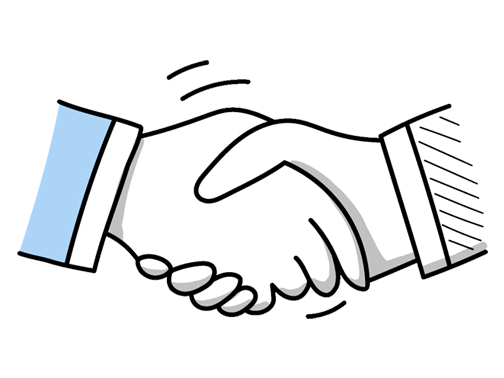Roofing Inspector Interview Questions (2025 Guide)
Find out common Roofing Inspector questions, how to answer, and tips for your next job interview
Practice Interviews Online - Identify your strengths and weakness in a realistic Roofing Inspector mock interview, under 10 minutes
Practice Now »Roofing Inspector Interview Questions
Questions like this assess your ability to convey technical information clearly and professionally to people who may not have your expertise. You need to say that you explain your findings in simple terms, provide detailed reports with photos, and ensure clients understand the issues and recommended solutions.
Example: When I communicate findings, I focus on clarity and honesty. I explain the inspection results in straightforward language, avoiding jargon, and highlight any urgent issues clearly. For example, if I spot damaged tiles, I describe the risk and suggest next steps. I also provide a written report with photos, so clients feel confident and informed about their roof’s condition and what needs attention.
Employers ask this question to assess your thoroughness, safety awareness, and ability to identify key signs of water damage during an inspection. You need to explain step-by-step how you visually check the roof and underlayers for issues like cracked or missing shingles, mention the safety gear you use such as ladders, harnesses, and proper footwear, and describe common water damage signs like mold or rot and what they indicate.
Example: When inspecting a roof for water damage, I start by carefully examining the surface for cracks, missing tiles, or worn seals. I check gutters and flashings for blockages that might cause leaks. Using proper safety gear, like harnesses and sturdy boots, is essential throughout. I also look beneath the roof, in the attic or ceilings, for stains or damp patches, which often reveal hidden issues like leaks or poor ventilation.
Interviewers ask this to assess your attention to detail and communication skills. You need to say that you use clear, organized notes and photos, then compile thorough reports to ensure accurate and actionable information for clients and teams.
Example: When inspecting roofs, I take detailed notes and photos to capture any issues clearly. I use digital tools to organize the information efficiently, making sure my reports are clear and easy to understand. For example, I include annotated images to highlight problem areas, which helps contractors address repairs without confusion. This approach ensures the findings are well documented and communicated effectively.
Questions like this assess your awareness and commitment to maintaining safety standards, which is crucial in preventing accidents on the job. You need to explain how you always use proper PPE like safety harnesses and non-slip boots, systematically check conditions such as weather and roof stability before starting, and follow all health and safety regulations while communicating any hazards clearly.
Example: When inspecting a roof, I always start by checking environmental conditions and securing appropriate safety gear like harnesses and non-slip boots. I carefully assess potential hazards, such as weak spots or loose materials, before stepping on. Communication with the team is key, making sure everyone is aware of risks and emergency procedures. Staying up to date with industry safety standards ensures the job’s done without incident.
This question helps the interviewer gauge your breadth of experience and your ability to handle different roofing materials and challenges. You should briefly mention the types of roofs you've inspected, highlight any specific issues you’ve encountered, and confirm your adherence to relevant inspection standards.
Example: In my previous roles, I’ve inspected a wide range of roofs, from traditional pitched slate and tiled roofs to flat felt or EPDM coverings. Each type brings its own challenges—like spotting weathering on slates or ensuring proper drainage on flat roofs. I’m well-versed in the relevant UK inspection standards, which helps me identify issues accurately and recommend the right solutions for each situation.
What they want to know is how your experience prepares you to identify roofing issues accurately and ensure safety standards. You need to clearly state your total years of relevant experience and highlight any specific inspection roles you’ve held.
Example: I’ve been working in roofing inspections for about five years now. During that time, I’ve assessed a range of properties, from residential homes to commercial buildings, identifying issues and ensuring compliance with safety standards. This hands-on experience has really helped me develop a keen eye for detail and a solid understanding of different roofing materials and techniques.
Hiring managers ask this question to see if you can convey important information accurately and avoid misunderstandings that could affect safety and project quality. You need to say that you use clear, straightforward language, confirm understanding by asking questions, and tailor your communication to the audience’s knowledge level.
Example: I focus on keeping things straightforward and checking in to confirm everyone’s on the same page. When inspecting roofs, I often use photos and simple diagrams to explain issues clearly. I also encourage questions to avoid misunderstandings. For example, after pointing out a concern, I’ll ask if they’re clear or need me to go over it again. This way, communication stays open and effective.
Hiring managers ask this to see if you prioritize safety and understand the risks involved. You need to say that you always use proper safety gear, follow protocols, and remain aware of your surroundings to protect yourself and others.
Example: When working on a roof, I always start by assessing the conditions and ensuring all my safety gear is in place, like harnesses and non-slip boots. I maintain clear communication with the team and keep an eye on weather changes. For example, if I spot loose tiles or wet surfaces, I slow down and take extra care to prevent accidents, making sure everyone stays aware and safe throughout the job.
Employers ask this to ensure you understand the safety risks on roofs and how to protect yourself. You need to mention essential PPE like hard hats, non-slip boots, and safety harnesses, explain how each prevents injuries, and show that you regularly check and maintain your equipment.
Example: When inspecting roofs, I always wear a hard hat and sturdy boots with good grip to prevent slips. A harness is essential for fall protection, especially on steep or high areas. I also use gloves to handle materials safely. These tools help me stay secure and focused, reducing the risk of accidents while allowing me to work confidently in different conditions.
What they want to understand is how you approach problems with creativity and resourcefulness on the job. You need to clearly describe the roofing issue you faced, explain the creative solution you used, and highlight the positive outcome it achieved, such as saving time or costs.
Example: Once, I encountered a flat roof with persistent water pooling despite regular drainage. Instead of just repairing gutters, I suggested installing a subtle, gradual slope using tapered insulation. This creative tweak improved water runoff without major structural changes. As a result, the roof stayed dry longer, reducing maintenance needs and extending its lifespan—a simple fix that made a significant difference.
Hiring managers ask this question to see if you can quickly prioritize safety and communicate effectively under pressure. You need to say that you first assess the severity and risks, then promptly inform the relevant parties, and finally arrange or recommend immediate temporary repairs to prevent further damage.
Example: If I spot an urgent issue during an inspection, I first assess how serious it is and any immediate dangers it might pose, like water leaks or structural risks. Then, I quickly inform the site manager or relevant team so everyone’s aware. Meanwhile, I suggest a quick fix or safety measure to prevent further damage until a full repair can be arranged. For example, placing a temporary cover over a damaged roof section to stop water ingress.
Employers ask this question to see if you can accurately identify roof problems and explain them clearly, which is crucial for ensuring safety and preventing costly damage. You need to mention looking for damaged shingles, sagging roof areas, and signs of leaks, then explain how you communicate these issues and recommend repairs to clients.
Example: When inspecting a roof, I look for things like cracked or missing tiles, worn flashing, and signs of water damage such as stains or damp patches inside. I also check the overall stability of the structure to spot any sagging or weakness. After a thorough walkaround, I clearly explain any issues found and recommend the best way to fix them to prevent further problems.
This question assesses your problem-solving skills and your ability to handle difficult inspections safely and effectively. You need to clearly explain the challenge, the steps you took to overcome it using your expertise, and the positive results or lessons you gained from the experience.
Example: Once, I inspected a roof after heavy storms that left hidden water damage. Access was tricky, so I used moisture meters and thermal imaging to identify issues without causing damage. I coordinated closely with the homeowner and contractors to prioritise urgent repairs. The roof was secured efficiently, preventing further problems. That experience reinforced how combining technology with clear communication can overcome challenging inspections.
Hiring managers ask this question to see how you spot critical problems and handle them responsibly. In your answer, briefly describe how you noticed the issue, assessed its seriousness, and the steps you took to inform the client and suggest solutions.
Example: During a routine inspection, I noticed significant corrosion on the metal flashings, which could have led to severe water damage. I carefully documented the extent of the problem and explained the risks to the property owner. I then recommended immediate repairs and coordinated with the roofing team to prioritise the work, preventing further deterioration and costly repairs down the line.
This interview question helps assess your problem-solving skills and attention to detail when handling challenging issues. You need to explain that you systematically gather information, inspect the roof thoroughly, consider all possible causes, and prioritize safety while describing your step-by-step diagnostic process.
Example: When faced with a complex roofing issue, I start by thoroughly inspecting all visible areas, noting any signs of wear or damage. I then consider factors like weather history and materials used, which can offer clues. Sometimes, I consult with colleagues or reference previous cases to ensure nothing’s missed. This careful, methodical approach helps me pinpoint problems accurately and recommend effective solutions.
What they want to see is your ability to communicate effectively and maintain professionalism during conflicts, ensuring the client feels heard and respected. You should say that you listen carefully to the client’s concerns, explain your findings clearly using simple terms, and stay calm to work together toward a solution.
Example: When clients question my inspection results, I make sure to listen carefully to their concerns to fully understand their point of view. I then explain the findings clearly, using simple terms to avoid confusion. If there’s any disagreement, I stay calm and work with them to find a practical solution that everyone is comfortable with—like once resolving a dispute by showing photos and recommending a straightforward repair that suited their budget.
What they want to know is how you assess risk and safety to ensure urgent problems are addressed first. You need to say that you prioritize issues based on safety hazards, severity of damage, and potential for further deterioration.
Example: When I spot issues during an inspection, I first focus on anything that could cause immediate safety risks or worsen quickly, like leaks or structural weaknesses. After that, I look at problems affecting the roof’s functionality or longevity, such as damaged shingles. For example, a small crack might wait, but a loose tile over a walkway needs prompt attention. This approach helps keep priorities clear and repairs efficient.
This question assesses your ability to prioritize and enforce safety to prevent accidents on site. In your answer, clearly describe how you recognized a specific hazard, communicated the necessary safety rules, and took decisive action to ensure compliance before work continued.
Example: On a recent site, I spotted unsecured tools near a roof edge, which posed a clear risk. I gathered the team, calmly explained the potential danger, and reminded everyone of the importance of securing equipment. We quickly put safety measures in place, and I followed up to ensure compliance throughout the day. Keeping everyone aware and accountable helps maintain a safe working environment.
Questions like this assess your technical knowledge and ability to apply it practically during inspections. You need to clearly explain common roofing materials, their pros and cons, and relate these to real inspection challenges you might face.
Example: Certainly. Common roofing materials include slate, known for its durability and classic look but can be heavy and costly; asphalt shingles, which are affordable and easy to install but may wear faster; metal roofs that last long and resist fire but can be noisy in rain; and clay tiles that offer great insulation but are fragile. As an inspector, understanding these helps identify potential issues specific to each type during assessments.
This interview question aims to see how well you handle pressure and adapt quickly to unforeseen problems, which is crucial for ensuring safety and accuracy during inspections. In your answer, describe a specific situation where you identified a sudden issue and explain the quick, effective steps you took to resolve it.
Example: During a routine inspection, I noticed unusual water staining that wasn’t visible from the surface. I quickly accessed the loft to identify a small, hidden leak from a cracked pipe joint. By addressing it on the spot and advising immediate repairs, I prevented further damage. Thinking quickly in that moment saved the client from costly repairs down the line.
This question assesses your ability to evaluate a roof’s safety and durability by identifying visible damage, material quality, and using proper testing tools. You need to explain how you visually inspect for signs like sagging or water damage, assess the condition and age of materials, and use tools like moisture meters to uncover hidden issues.
Example: To determine a roof’s structural integrity, I start by closely examining visible elements like tiles, joists, and flashing for any signs of damage or wear. I consider the materials used and whether they meet current building standards. Sometimes, I use tools like moisture meters or load testers to check strength. For example, spotting sagging beams early can prevent bigger issues later on and ensures the roof remains safe and sound.
This interview question assesses your experience with formal documentation and communication in high-stakes situations, highlighting your attention to detail and professionalism. You need to clearly explain any relevant instances where you provided accurate, thorough reports or testimony, emphasizing your reliability and understanding of legal or insurance procedures.
Example: Yes, I have prepared detailed inspection reports that have been used in insurance claims. On one occasion, I was called upon to provide a statement after a storm caused significant roof damage. My clear, thorough assessment helped clarify the extent of the damage for both the insurer and homeowner, ensuring a fair resolution. I’m comfortable communicating findings in ways that support legal or insurance processes when needed.
This question assesses your commitment to safety and your proactive approach to industry changes. You need to say that you regularly review official safety guidelines, attend training sessions, and stay connected with industry associations to ensure you follow the latest standards.
Example: I keep up to date by regularly checking updates from industry bodies like the Health and Safety Executive and attending training sessions when possible. I also follow trade magazines and join local industry groups where practical insights and changes in regulations are often discussed. This approach helps me ensure that my inspections meet current standards and keeps me aware of any new safety practices in roofing.
Hiring managers ask this question to see if you can communicate technical details clearly to non-experts and ensure they understand the problem and its importance. In your answer, explain how you broke down the issue using simple language and analogies, checked for understanding by asking questions, and described the consequences and necessary actions.
Example: In a previous inspection, I noticed a hidden leak causing wood rot. I explained to the homeowner that while it wasn’t visible yet, the damage could worsen if left untreated. I used simple terms, comparing the roof to a waterproof jacket, and outlined the repairs needed to prevent further issues. This helped them understand the urgency without overwhelming technical details.
What they want to know is if you understand the essential tools for accuracy and safety in inspections. You should mention common equipment like ladders, moisture meters, binoculars, and safety gear to show you prioritize thoroughness and protection.
Example: When inspecting roofs, I rely on a combination of practical tools like telescopic ladders and moisture meters to check for dampness. I also use binoculars for a close look at hard-to-reach areas without climbing every time. A drone can be helpful on larger sites to spot issues safely. Alongside these, a good flashlight and a camera are essential to document findings accurately.
Ace your next Roofing Inspector interview with even more questions and answers
Common Interview Questions To Expect
The interviewer is looking for a brief overview of your background, experience, and skills relevant to the role. Focus on your professional achievements and how they align with the job requirements.
Example: I have been working in the roofing industry for over 10 years, with experience in both residential and commercial projects. I have a strong eye for detail and a keen understanding of building codes and regulations. My goal is to ensure that every roof I inspect meets the highest standards of quality and safety.
The interviewer is looking to see how you found out about the job opening. You can answer by mentioning a job board, company website, referral, or networking event.
Example: I actually found out about this position through a job board online. I was actively looking for opportunities in the roofing industry and came across the listing. It seemed like a great fit for my skills and experience, so I decided to apply.
The interviewer is looking for your long-term career goals and aspirations. You can answer by discussing your desire for growth within the company, further education, or taking on more responsibilities.
Example: In five years, I see myself continuing to grow and develop within the company as a roofing inspector. I am eager to take on more responsibilities and possibly pursue further education in the field to enhance my skills. Ultimately, my goal is to become a trusted and knowledgeable expert in the roofing industry.
Interviewers are looking for honesty, professionalism, and a positive attitude in your response. Be prepared to explain any reasons for leaving your previous job in a constructive manner.
Example: I left my last job because I was looking for new challenges and opportunities for growth in my career. I felt like I had reached a plateau in my previous role and wanted to expand my skills in a different environment. I am excited about the possibility of bringing my experience to this new position as a Roofing Inspector.
Interviewees can answer by discussing a specific mistake, acknowledging responsibility, explaining how they rectified the situation, and highlighting lessons learned. Interviewers are looking for honesty, accountability, problem-solving skills, and the ability to learn from mistakes.
Example: Yes, I once misinterpreted a roofing inspection report which led to a misunderstanding with a client. I took responsibility for the error, communicated openly with the client to clarify the situation, and made sure to double-check all future reports to avoid similar mistakes. It taught me the importance of attention to detail and clear communication in my role as a roofing inspector.
Company Research Tips
The company's official website is a goldmine of information. Look for details about the company's history, mission, and values. Pay special attention to any sections dedicated to their roofing services. This can give you insight into the types of roofing systems they specialize in, their approach to roofing inspection, and any unique selling propositions. Also, check out their blog or news section to stay updated with any recent developments or projects.
Tip: Don't just skim through the website. Take notes and try to understand the company's culture and work ethic. This will help you align your responses with the company's values during the interview.
Social media platforms can provide a more informal view of the company. Check their LinkedIn, Facebook, Twitter, and Instagram pages. Look for any updates about recent projects, customer testimonials, or employee experiences. This can give you a sense of the company's reputation and how they interact with their customers and employees.
Tip: Look for any common themes or recurring topics in their posts. This can give you an idea of what the company prioritizes and values.
Stay updated with the latest news and trends in the roofing industry in the UK. This can help you understand the current market scenario, popular roofing materials, and emerging technologies in roofing inspection. Websites like Roofing Today or the National Federation of Roofing Contractors can be useful resources.
Tip: Try to relate these industry trends to the company's services during the interview. This shows that you are well-informed and proactive.
Understanding the company's competitors can give you a broader view of the market. Look for other companies offering roofing inspection services in the UK. Compare their services, pricing, and customer reviews with the company you are interviewing with. This can help you understand the company's position in the market and their unique strengths.
Tip: Use this information to highlight why you want to work for this particular company and how you can contribute to their success.
What to wear to an Roofing Inspector interview
- Clean, well-fitting jeans or work trousers
- Comfortable, sturdy shoes or boots
- A neat, collared shirt or polo
- A light jacket or sweater, depending on weather
- Avoid overly casual clothing like shorts
- Avoid overly formal clothing like suits
- Ensure clothes are free of stains or tears
- Minimal jewelry and accessories
- Neat and clean grooming





